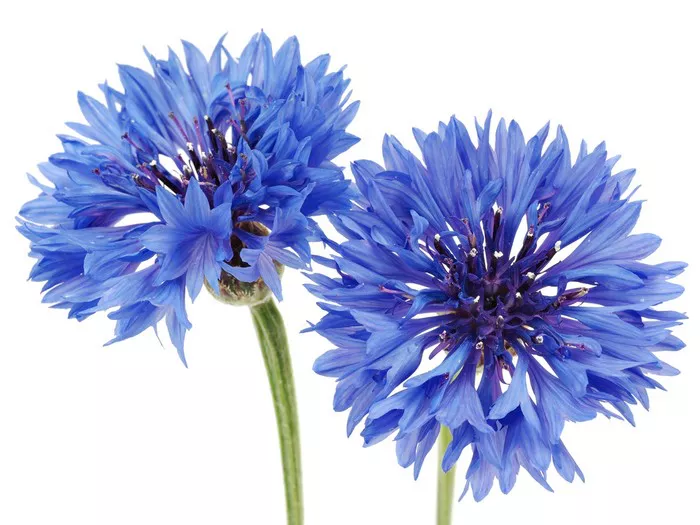Coneflowers, members of the Echinacea genus, are renowned for their vibrant blooms and medicinal properties. Witnessing the journey of coneflowers from their initial sprouting stage is a rewarding experience for gardeners and nature enthusiasts alike.
The Germination Phase: Tiny Green Shoots Emerge
Coneflowers typically start their journey from seeds, and the germination phase marks the beginning of their life cycle. As the seeds are sown in well-drained soil, tiny green shoots emerge from the ground. These initial shoots, often resembling delicate blades of grass, signify the onset of coneflower growth. At this stage, they are highly susceptible to environmental conditions, requiring proper moisture, sunlight, and care to ensure a healthy start.
Coneflower Leaves Unfurl: Identifying Early Foliage
As coneflowers continue to grow, their leaves begin to unfurl, revealing distinctive characteristics that set them apart. The leaves are typically lance-shaped and possess a slightly coarse texture. The edges may appear serrated, adding to the overall visual interest. The emergence of these early leaves is a crucial phase in coneflower development, as it marks the establishment of the plant’s ability to photosynthesize and generate energy for future growth.
Formation of Rosette: Compact and Symmetrical
In the early stages of coneflower growth, a compact rosette formation takes shape. The leaves arrange themselves in a symmetrical pattern around the central stem, creating a rosette that is both aesthetically pleasing and functionally significant. This rosette structure serves as the foundation for the vertical growth that coneflowers will undergo as they progress through their life cycle.
Early Height and Stem Development: The Upward Climb
As coneflowers advance in their growth, the central stem elongates, and the plant begins its upward climb towards its mature height. At this point, the stem may appear slender, yet it possesses the inherent strength to support the future weight of the coneflower’s distinctive blooms. The early stages of stem development are crucial for establishing the plant’s structural integrity and readiness for the forthcoming flowering phase.
Distinguishing Characteristics of Coneflower Seedlings
Coneflower seedlings boast unique characteristics that set them apart from other plants in their early stages. One of the most notable features is the presence of fine hairs on both the stems and leaves. These hairs contribute to the plant’s ability to retain moisture and protect against environmental stressors. Additionally, coneflower seedlings may exhibit a reddish or purple tinge on the undersides of their leaves, adding a subtle touch of color to their overall appearance.
Formation of True Leaves: Transition to Maturity
As coneflowers progress in their growth, the early leaves give way to the development of true leaves. These mature leaves possess the characteristic lance shape and coarse texture associated with coneflowers. The transition to true leaves marks a significant milestone in the plant’s journey, signifying its readiness for more robust growth and the eventual formation of the iconic coneflower blooms.
Coneflower Bud Formation: Anticipation of Blooms
The promise of coneflower blooms becomes evident as buds start to form on the growing plant. These buds, tightly closed and often tinged with a hint of color, are a precursor to the vibrant and distinctive blooms that coneflowers are celebrated for. Observing the bud formation is an exciting phase for gardeners, as it heightens anticipation for the burst of color and the arrival of pollinators that will soon visit the coneflower garden.
Early Blooms and Petal Unfurling: Nature’s Splendor Unveiled
As coneflowers reach the peak of their growth, the tightly closed buds gradually unfurl, revealing the exquisite petals within. The blooms open in a gradual and graceful manner, exposing the characteristic cone-shaped center surrounded by vibrant, radiating petals. The color palette varies among coneflower varieties, ranging from shades of pink, purple, and white to orange and yellow. Witnessing the unfolding of coneflower blooms is a spectacle that showcases nature’s splendor and the culmination of the plant’s early growth stages.
Coneflower Varieties: Exploring Diversity in Form and Color
Coneflowers are a diverse group, and the early stages of growth showcase the distinct characteristics of different varieties. Some coneflowers feature single rows of petals surrounding the central cone, while others boast double or pom-pom-like blooms. The array of colors and forms adds to the allure of coneflowers, making them a versatile and captivating addition to gardens, borders, and natural landscapes.
Coneflowers in Garden Design: Aesthetic and Ecological Appeal
In garden design, the early stages of coneflower growth play a crucial role in shaping the overall aesthetic and ecological appeal of the landscape. The rosette formation, leaf texture, and eventual bloom display contribute to the visual harmony of the garden. Additionally, coneflowers attract pollinators such as bees and butterflies, enhancing the ecological diversity of the garden and fostering a symbiotic relationship with these essential creatures.
Conclusion
The early stages of coneflower growth unfold like a captivating story, from the emergence of tiny green shoots to the breathtaking display of vibrant blooms. Observing coneflowers in their infancy provides insight into the resilience and beauty of these plants. Whether you’re a seasoned gardener or a nature enthusiast, appreciating the distinct characteristics of coneflowers in their early stages adds a layer of connection to the natural world and an appreciation for the wonders of plant life.


